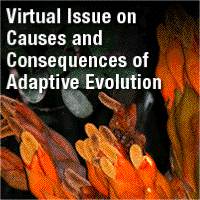Biologists define and describe organisms by their traits, and through the ecological and evolutionary consequences of those traits. As we enter an era dominated by rapid evolution in response to anthropogenically caused environmental change, understanding the functional significance of traits – how, through facilitation and constraint, they determine performance in the adaptive landscape – is an imperative charge of evolutionary biology, and one that Functional Ecology actively serves.
A merit of the functional approach, whether in manipulative or comparative designs, is in generating testable hypotheses about trait utility and its evolutionary consequences. Such tests simultaneously probe and expand our understanding of organismal responses to selection, and the significance of adaptive change for populations and communities.
This virtual issue highlights some of the journal’s articles from the past two years on the causes and consequences of adaptive evolution. Several of these articles first appeared either in the June 2007 special feature Evolution on Ecological Time-scales or the June 2008 special feature Evolutionary Ecology of Senescence.
The papers are grouped under four headings. The first is ‘Adaptation and constraint’, comprised by five papers which explore the dynamics and significance of contemporary evolution (Carroll et al., 2007; Ghalambor et al., 2007; Räsänen and Kruuk, 2007; Kinnison and Hairston, 2007; and Fussman et al., 2007). Next are three similarly process-oriented pieces on ‘Adaptive differentiation and speciation’ (Garant et al., 2007; Hendry et al., 2007; and Feder and Forbes, 2007). Following those are 10 evolutionary analyses of ‘Functional performance and its consequences’, most of which focus on particular traits, either within or among species, or within specific biotic interactions (Siepielski and Benkman, 2007; Thomas et al., 2007; Schaefer et al., 2008; Luo et al., 2008; Capellini et al., 2008; Emile et al., 2008; Herrel et al., 2009; Monaghan et al., 2008; Ricklefs, 2008; and Wilson et al., 2008). We conclude with a pair of manuscripts with distinctive evaluations of the role of ‘Sexual selection’ in evolution, one treating contemporary evolution (Svensson and Gosden, 2007), and the other its influence on the evolution of senescence (Bonduriansky et al., 2008).
I hope that these studies and others like them, which help to illuminate contemporary patterns and processes of adaptation, will inform us productively as we strive to meet both basic and practical goals in evolutionary biology.

